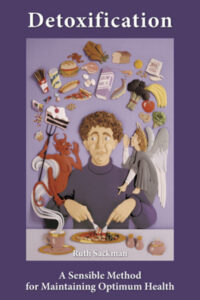Human beings have been producing cultured foods and beverages for at least 7-8,000 years – wine, beer, yogurt, kefir, kimchi, sauerkraut, pickled cucumbers, to name just a few. Unfortunately, “progress” in industrial food production has largely eclipsed these traditional ways and we’re missing out on the wonderful benefits they have to offer. Enter Sandor Ellix Katz, who calls himself a “fermentation revivalist” (many call him “The Prince of Pickles”). Katz has made it his mission to travel about teaching all the ins and outs of the ancient practice of fermentation, which is really the key to a healthy digestive environment, enabling us to assimilate nutrients effectively, strengthen and maintain our immune system and improve overall body function. His latest book, The Art of Fermentation, is probably the most in-depth exploration of the subject ever written. Here are excerpts from an interview he did with Paula Crossfield of CivilEats:
What first motivated you to start fermenting, and why do you think it has so captured your imagination?
Although I grew up loving the flavor of fermented sour pickles, and came to appreciate the digestive benefits of live-culture ferments, it was only after I got involved in keeping a garden that I started fermenting anything myself. I was driven by a practical desire to use and preserve the harvest. My first experiments with cheese and yogurt were similarly motivated by a desire to make use of our periodic overabundance of milk from our goats. But as my fermentation explorations continued, practical motivations started to be eclipsed by the magic of it. I’d mix flour and water together and delight in the anticipation and gradual arrival of invisible friends bubbling away. I became entranced by the power of these invisible life forces. I’m not sure I can explain why, but they became very important to me, and I continue to feel very devoted to them.
You write that fermented foods can “be a centerpiece of economic revival.” How, and what does that look like to you?
One of the striking features of the recession/depression that we have been experiencing is that it was precipitated by a crisis in the value of abstractions, but really it did not shift productive capacity in the slightest. The local food revival – meaning not only fermentation, but also agriculture, as well as other means of transforming the products of agriculture into the foods people love to eat – creates real value, and can channel people’s energies into productive activities than can feed and nourish people.I’m certainly not an economist, but participation in the local food revival is a form of economic stimulus. When you buy a loaf of bread baked by a local baker with local grain milled locally, you not only get better, fresher, more nutritious bread with a smaller environmental footprint, but you also help support a web of economic relationships, and promote the local recirculation of the dollars you spent. Compare that with the economic relationship you support when you buy a loaf of bread at the supermarket, made by a multi-national corporation, which supports a very different web of relationships, including shareholders, long-haul truckers, oil drillers and refiners, plastic packaging, monoculture grain growers, etc. Participation in local food systems is not only healthier and better for the environment: it’s economically significant. Reviving baking, brewing, kraut-making, salami-making, yogurt-making, etc., as local activities creates productive employment as well as more secure, fresher, more nutritious food with a smaller environmental footprint.
In the book you’ve strayed from the format of your previous book, Wild Fermentation, which provided specific recipes. Why?
I am interested in communicating understanding of the hows and whys of fermentation processes. Personally, I rarely use recipes, and when I do I generally consult a few and then deviate from them. When I wrote Wild Fermentation, I thought I had to include recipes, and many of those recipes are notes from a single experiment, which I will spend the rest of my life clarifying for people. On the Internet, recipes are everywhere for those who feel that they need exact recipes to guide them. In my new book, I have abandoned the recipe format, but still I explain general proportions, or ranges of proportions, and offer suggestions for ingredients and seasonings, but always in the spirit of try any of these, experiment, and find the combinations and proportions that work for you.
What are some of the strangest and/or most delicious things you’ve fermented? Any interesting ferments that didn’t make it into the book?
The ferments that have been strangest in terms of people being squeamish about them have been fish ferments. I’ll never forget the response of some of my friends when I showed up at a potluck with extremely ripe balao-balao (Phillipine-style fermented shrimp and rice). But to me it was very delicious, and kept getting better as it matured. So many of the ferments are incredibly delicious to me. I’ve been loving cooking with my Chinese fermented black beans. Sometimes deceptively simple ferments are shockingly good, such as Afro-Brazilian acaraje. I included all the types of ferments I know in the book, but of course since it went to press I have encountered some new ones, such as the semi-fermented bread pudding I tried in Chicago last week. I posted photos and a description of my website (wildfermentation.com), where I will continue posting new andinteresting ferments I encounter.
What would you suggest as a starter project to someone who has never fermented anything before?
Fermenting vegetables is the place to start. It’s very easy, intrinsically safe, no need for starters or special equipment, it’s fast, and incredibly delicious and supportive of good health.
Source: CivilEats.com




